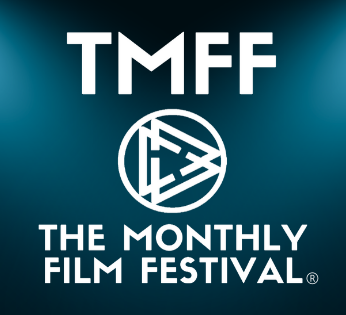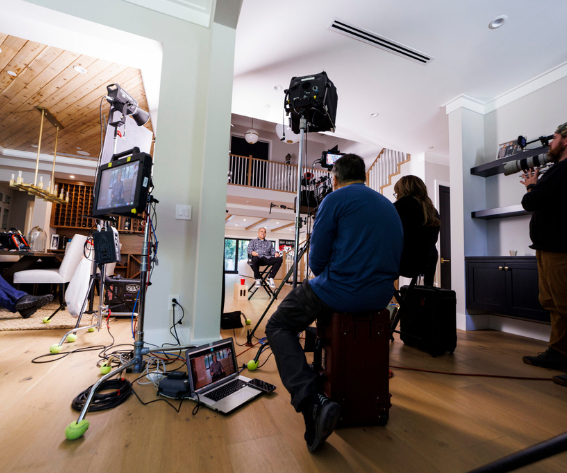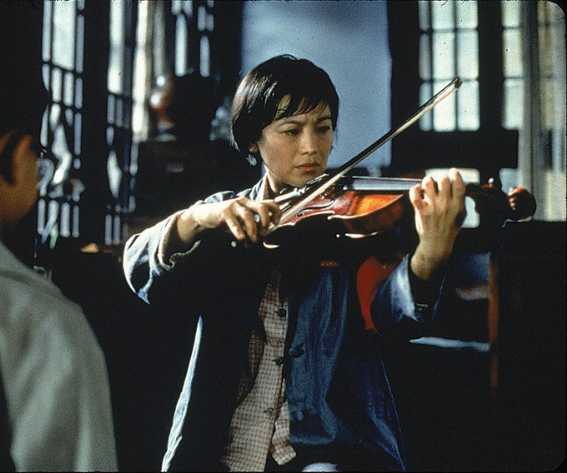Each year, festivals like Sundance accept only about 53 short films out of more than 12,000 submissions, so standing out takes thoughtful planning and careful execution. Even a simple 10-minute project can cost between $3,000 and $15,000, since gear, crew, locations, and post-production quickly add up. Many first-time directors rely on personal savings, small grants, or crowdfunding. But when a final invoice shows up unexpectedly — for sound mixing, permits, or gear rentals to avoid delays and keep the shoot on track. That’s why it’s so important to approach your short film with a solid structure and plan.
In the eight steps to making a short film, you’ll see a clear path: shaping a tight script, building a realistic budget, organizing pre‑production, casting, running the shoot, editing, adding sound and music, and submitting to festivals. Follow these steps in order, stay flexible when things go sideways, and you’ll walk away with a film you’re proud to share.
How Much Does It Cost to Make a Short Film
Before we discuss the steps, let’s estimate the average price for such a product. The budget of a short film often depends on factors like your project’s scale, location fees, equipment rentals, hiring a film crew and any professional services. Many filmmakers plan on roughly $4,000 as an average budget, though some spend less than $1,000 while others exceed tens of thousands. The final amount reflects your creative goals and how resourceful you can be.
Directors might save money by using personal equipment or filming in their homes. Plan for sudden expenses to avoid unexpected hits to your budget. Simple items, such as meals for the crew, extra props, or last-minute permit fees, can add up quickly. Keep a small cushion — usually around 10% of your total costs — in case anything unexpected happens.
Find a Strong Concept and Write Your Script
Every short film begins with an idea. Pick a story that is easy to communicate and resonates with your audience. It might be a conflict or theme that inspires reflection or discussion. Outline the main points once you have a rough idea. Concentrate on a single event, choice, or relationship that creates tension instead of broad character studies. Find your protagonist’s biggest challenge and how it will be resolved in a limited timeframe.
After outlining, write a focused script. Limit the number of characters so everyone serves a purpose. Double-check that your scenes are logical and engaging. Each line of dialogue should have a clear reason to exist. Avoid filler. Keep your overall page count short. Make the script straightforward: set up the world on the first page or two, show a conflict by page three or four, and drive tension till the end. In that final scene, your own film should provide a clear resolution.
Create a Production Plan
A production plan is needed to organize your project’s logistics and costs. Short films can be expensive, so you must map out pre-production, shooting, and post-production stages with a clear timeline. Set a start date for each phase. Identify tasks you should finish first, such as locking down a script or securing special equipment. Make a note of deadlines and decide whether you can handle certain jobs yourself or if you need professional help.
If you need reliable support to finance your film, you can search for grants, crowdfunding campaigns, or even personal solutions. Sometimes, you need additional funds before you receive backing from sponsors or festivals. You may discover a 5000 dollar loan option to fund the movie making process. Look for an option that fits your budget and avoids unnecessary fees. Consider listing approximate costs for each major expense: camera rental, lighting, studio space, cast fees, permit fees, and post-production. Be realistic.
Choose the Right Crew and Equipment
Short films don’t demand a huge crew. A small and skilled team that can handle multiple roles is better. You may find a cinematographer who also knows lighting, for instance. You may also handle some tasks by yourself to save funds. The team should include:
- Director, who oversees the creative direction.
- Producer, who manages financing, logistics, and administration.
- Cinematographer, who handles camera operation and visual style.
- Sound Engineer, who captures clear audio on set.
- Editor, who pieces together footage, sound, and music.
Regarding equipment, decide what best suits your project. Short films usually rely on DSLR or mirrorless cameras because they are affordable and produce cinematic footage. Good lighting can make a low-budget film look polished, so purchase proper lighting equipment or professional rentals. Don’t forget about sound. Choose high-quality microphones, wind protection, and sound mixers. Crisp audio often separates amateurs from professionals.
Secure Locations and Permits
Locations can create the visual tone of your film. If your story takes place in a single room, find a space that matches the script’s mood and includes enough room for the crew. Find venues that fit your story’s environment if you need an outdoor area. Check noise levels, lighting conditions, and public access upfront.
Permits protect you from legal trouble. City regulations vary: some areas have strict filming rules, and smaller towns may be flexible. Read local guidelines or contact your city’s film commission to avoid fines. If you use weapons, stunts, or large crowds in your film, read about them too.
Moreover, insurance, location fees, or security staff should be considered. Even a free location can require some budget allocation. The more transparent you are with property owners or city officials, the smoother your production will run.
Rehearse and Sketch Your Storyboards
Actors need clear direction about each scene’s tone, pacing, and emotions. During rehearsals, test how dialogue sounds and how characters interact. Ask actors to share their thoughts on their roles. They might provide improvements that strengthen the story.
Storyboarding is about illustrating each shot in a rough format, like simple drawings. A visual plan helps you avoid confusion on set. Share these sketches with your cinematographer, lighting team, and key crew members to confirm your alignment. Think of each storyboard in a short film as a blueprint. If your script calls for a tense close-up that shows an actor’s fear, note the exact angle or lens you plan to use. You will save time when you start filming and spot potential problems.
Each genre has its specifics. For instance, if you wonder how to make a short documentary, you must rely on real-life stories and factual content. They highlight social issues and/or current events. Such a process requires additional research:
- Choose a meaningful subject. Identify a person, group, or situation worth exploring.
- Contact participants. Reach out for interviews and gain permission to film.
- Gather background information. Use credible sources to be accurate.
- Plan interviews and b-roll. Capture footage that illustrates primary points.
- Edit with clarity. Keep a balance and provide context without overwhelming viewers.
Confirm you can use personal testimonies, archival footage, or photographs. Cite legitimate sources. According to the Parrot Analytics, demand for documentaries is growing again in the US, reflecting public interest in true stories that illuminate global topics.
Manage the Filming Process
Filming is already a real step. Good planning pays off here because it reduces downtime, confusion, and wasted resources. When you start rolling, keep your set organized.
Balance work with short breaks. A small team must often handle multiple tasks, so stress can build quickly. A supportive atmosphere helps everyone do their best. Remind your crew why the story matters and celebrate each milestone, even if it is as simple as finishing a tough scene on schedule.
Here are a few more useful points to keep your filming process clear:
- Have a detailed call sheet. Provide everyone with a document that lists each scene’s times, locations, and roles.
- Check gear before shooting. Test batteries, memory cards, and microphones. A technical glitch can derail an entire day.
- Set a clear chain of command. Ensure the director knows who to consult for lighting changes or location adjustments.
- Prioritize safety. Rushing can cause accidents. If your script involves stunts or special effects, hire a professional to supervise them.
Edit and Polish Your Footage
Editing shapes the raw material into a final film. The first step is sorting through your footage to pick the best takes. Then, arrange them in a rough sequence. During this stage, focus on pacing: a short film must move quickly without feeling rushed. Watch each cut with a critical eye. Does every scene build toward the next? Are transitions clean and visually interesting?
Check a few more aspects:
- Color correction: Ensure consistency in brightness and color balance across shots.
- Color grading: Create a distinct mood or style through color adjustments.
- Sound mixing: Adjust dialogue, music, and effects for clarity and depth.
- Music selection: Choose tracks that complement your story’s tone.
Even small details matter. A sound glitch can distract viewers, and an abrupt cut might break immersion. Short films usually run from a few minutes to around 20 minutes, so these details can make or break audience engagement. Test different edits to see which version works best.
Launch and Promote Your Film
After editing, plan how to share your film. Well, festivals are a common way. They can build your reputation and expose your work to potential collaborators. Check submission rules carefully because length restrictions vary, and some festivals only accept premieres. Choose a platform that fits your purposes if you need an online distribution. You may opt for a free release on Vimeo to reach a broad audience.
Promotion begins before the release. Create a simple poster or image that captures your film’s theme. Post teasers on social media and create an email list to share updates with friends, industry contacts, or communities.
A short film is a gateway to future projects. Potential investors, producers, or networks might see your work and decide they want to collaborate on a feature film or series. Even if you don’t secure immediate contracts, the connections you form are invaluable for a lasting career in film.
How Affordable it is to Make a Short Documentary, Comedy, or Horror Film
The budget for a short film changes a lot once you pick a genre. Documentaries usually cost the least because you shoot real‑world locations and rely on interviews instead of large crews or built sets. Travel, archival footage, and time spent gathering material are the main expenses. With careful planning you can finish a tight, interview‑driven doc for as little as two thousand dollars, though ten to twelve thousand is more common when you license archival clips or travel to multiple locations.
A short comedy sits in the middle. It often needs several interior spaces, an ensemble cast, and clean, well‑lit shots so the timing and expressions land. That pushes budgets into the three‑to‑fifteen‑thousand‑dollar range. Costs climb every time you add a new location day—meals, transport, permits, and overtime add up fast. The cheapest way to keep a comedy on track is to write scenes around places you already control, rehearse hard, and keep company moves to a minimum.
Horror is usually the most expensive of the three. Practical effects, prosthetic make‑up, fog machines, and dramatic lighting rigs drive costs. Even a small creature feature can hit four thousand dollars on the low end, while more ambitious shorts with stunts and elaborate gore can stretch past twenty thousand. You can still cut costs by implying violence with shadows and sound instead of full prosthetics, and by shooting night scenes with battery‑powered LEDs instead of large generators.
Choose the genre that matches the resources you already have. If you have great access to real stories, make a documentary. If you own lights and love comedians, make a tight ensemble comedy. If you can borrow a creepy farmhouse and a fog machine, lean into horror. Lock your script to what you can afford, then let creativity—not cash—carry the film.









Leave a reply